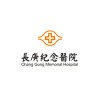
Efficacy and Safety of SP-8203 in Patients With Ischemic Stroke Requiring rtPA
Ischemic StrokeThis clinical trial is designed to evaluate the efficacy and safety of the combination therapy of SP-8203 (Otaplimastat) and recombinant tissue Plasminogen Activator (rtPA) standard of care. In this clinical trial, rtPA will be injected intravenously using an infusion device. If reperfusion is not occur in spite of rtPA therapy, endovascular therapy can be performed.

Efficacy and Safety Study of Neu2000KWL for Acute Ischemic Stroke Patients Within 6 Hours of Onset...
StrokeCerebral InfarctionThe purpose of the study is to explore safety and efficacy of Salfaprodil administration for patients with acute ischemic stroke within 6 hours of onset.

The Use of the Tip Stim Glove Device to Achieve Coordinated Movement of the Human Hand
StrokeIschemicThe study was to evaluate the use of the Tip Stim device to achieve coordinated movement and grip force in stroke patients under conditions of active and passive stabilization of the trunk.

Tenecteplase Reperfusion Therapy in Acute Ischemic Cerebrovascular Events(TRACE)
Acute Ischemic StrokeTo explore the safe and efficacious dose of rhTNK-tPA injection administered within 3 hours after onset of hyperacute ischemic stroke; to provide dose evidence for phase III clinical trial.

High-flow Nasal Cannula Oxygen Therapy for Ischemic Stroke Patients With Dysphagia and Obstructive...
Cerebral InfarctionSleep Apnea2 moreHigh flow nasal cannula (HFNC) ventilation therapy was found to improve the severity of obstructive sleep apnea in non-stroke subjects. The investigators hypothesized that HFNC might be effective in stroke patients with dysphagia who needed nasogastric tube feeding and can not receive continuous positive airway pressure ventilation for obstructive sleep apnea.

Rheo-Erythrocrine Dysfunction as a Biomarker for RIC Treatment in Acute Ischemic Stroke
StrokeAcute3 moreThis study aims to investigate whether Remote Ischemic Conditioning (RIC) improves rheo-erythrocrine dysfunction in acute ischemic stroke

Immuno-inflammation in the Acute Phase of an Ischaemic Cerebral Accident Managed by Decompressive...
Ischemic Cerebrovascular AccidentThe objective of the NEUTROSURGERY study is to describe the local and locoregional immuno-inflammatory activity in patients suffering from malignant sylvian ischaemic cerebral accident and treated with decompressive hemicraniectomy compared to a control population of patients to be operated on in neurosurgery for another neurosurgical pathology.

Effects of High-intensity Interval Aerobic Training on Balance, Walking Capacity, and Quality of...
StrokeIschemic1 moreHemiplegia is one of the most common sequelae of stroke. Stroke is the leading cause of disability in adults all around the world. Stroke survivors can suffer several neurological impairments and deficits which have an important impact on patient's quality of life and which increase the costs for health and social services. After stroke, impairments in ADLs and functional status, deterioration in health related quality of life can be seen. The purpose of this study is to Determine the effect of Aerobic exercise training on Balance, Walking capacity and quality of life in sub-acute stroke.

Human Urinary Kallidinogenase Improve Short Term Motor Functional Outcome of Acute Ischemia Stroke...
StrokeAcuteAcute cerebral infarction is a common type of ischemic stroke, causing brain dysfunction in patients with high morbidity and disability. With the changes in people's diet, lifestyle patterns and population aging, the incidence of acute cerebral infarction has increased year by year, which has become an important cause of disability and death in middle-aged and elderly patients. The human urinary kallidinogenase (HUK) was used in China in the management of acute ischemic stroke (AIS) in recent years. However, the mechanism of HUK on AIS has not been systematically investigated. This study aimed to assess the effect of HUK on motor functional outcome and relative corticospinal tract recovery in the patients with AIS. Diffusion tensor imaging(DTI) and diffusion tensor tractography(DTT) have all been used to observe features of cerebral white matter fibrous structures. In addition, diffusion tensor tractography which is used to trace fiber bundle and evaluate white matter fiber bundle integrity and direction is the only non-invasive imaging method to display the corticospinal tract in vivo.

Phase III Clinical Trial of Y-2 Sublingual Tablets in the Treatment of Acute Ischemic Stroke
StrokeAt present, the treatment of acute ischemic stroke includes intravenous thrombolysis, intravascular interventional therapy (including arterial thrombolysis, mechanical thrombectomy, angioplasty and stent implantation), antiplatelet therapy, anticoagulant therapy, defibrasion therapy, volume expansion therapy, and neuroprotective therapy. Y-2 sublingual tablet is an innovative drug developed by Yantai yinuoyi Biomedical Technology Co., Ltd. with independent intellectual property rights. This product is a free radical scavenger and inflammatory protein expression inhibitor. It can clear hydroxyl free radical (COH), nitric oxide free radical (no) and peroxynitrite ion (onoa), and inhibit the expression of tumor necrosis factor-A (TNF-a), interleukin IP (IL-1 (3), cyclooxygenase-2 (COX-2) and inducible nitric oxide synthase (iNOS) and other inflammatory related proteins induced by cerebral ischemia. By clearing the excessive free radicals produced in the brain tissue during ischemia and reperfusion and inhibiting the secondary inflammatory reaction, we can reduce the damage of free radicals and inflammatory reaction to the brain tissue, block the pathological change process caused by cerebral ischemia from two ways, and play a synergistic therapeutic role in cerebral ischemia injury.
